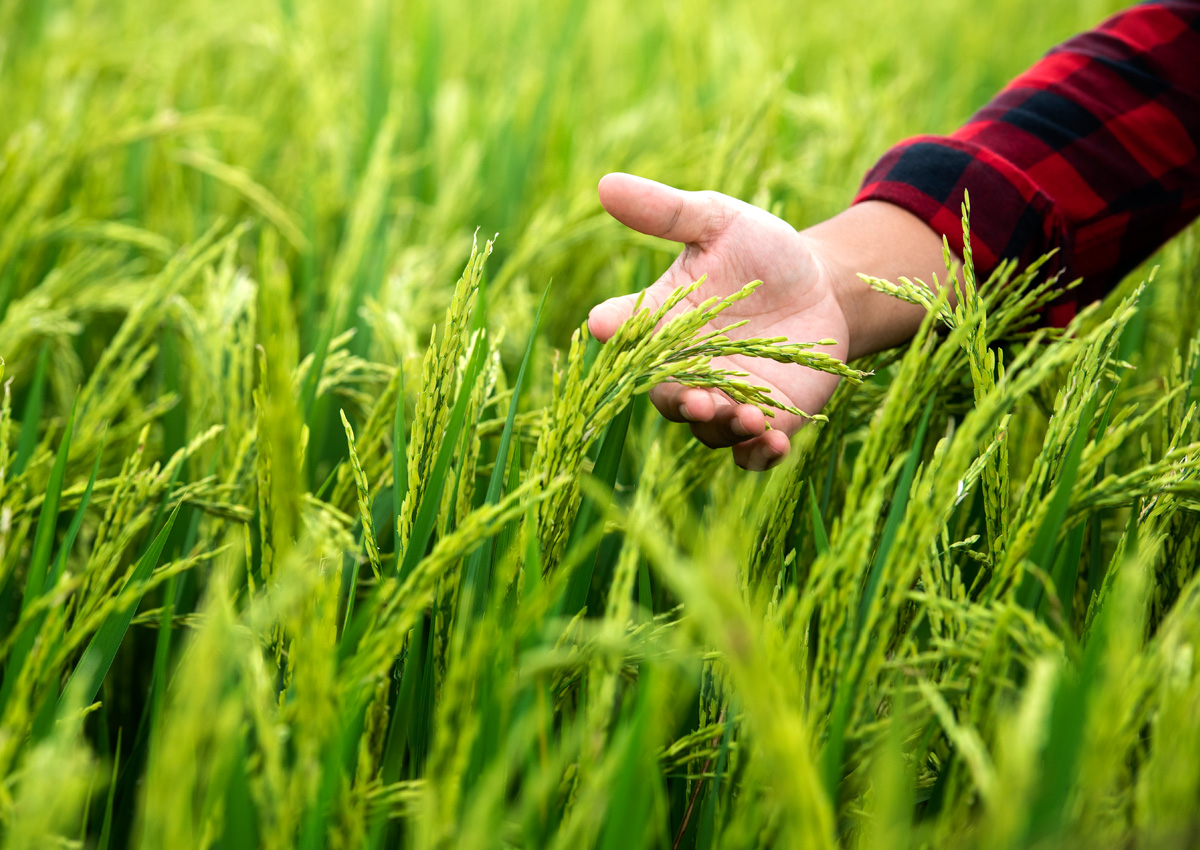
Research Team Discovers Genetic Mutations that Made Rice Cultivation Possible
July 13, 2022| |
A study conducted by an international research collaboration suggests that the emergence of cultivated rice from wild rice plants is the result of three gene mutations that make the seeds fall from the plant less easily. The researchers discovered that each of the three mutations individually has little effect, but when all three mutations are present, rice panicles retain more of their seeds, resulting in a greater crop yield.
The researchers discovered that the causal mutation in the qSH3 gene is necessary to prevent rice seeds from falling (called seed shattering). In the qSH3 gene mutation, a single nucleotide substitution on the gene (YABBY) is found in the majority of indica and japonica cultivars, the world's most widely farmed rice species. This research found that plants with only the qSH3 gene mutation dropped their seeds naturally. When the qSH3 mutation was combined with the previously reported sh4 gene mutation, the abscission layer required for seed shattering was partially inhibited.
An analysis of structural mechanics was performed to determine the relationship between panicle opening and closing and inhibition of the abscission layer. The results showed that when all three mutations are present, shattering was suppressed and the seeds remained attached to the panicles. It is believed that man's hunter-gatherer ancestors observed the visual characteristics of certain rice plants with a higher yield and began cultivating them, paving the way for rice to become a staple crop.
For more details, read the article in Research at Kobe.
| |
You might also like:
- Filipino Scientist Identifies Gene to Help Rice Plants Survive Drought
- Nitrogen Use Efficient Rice Getting Closer to Farmers' Fields in Nigeria
- Rice Plants Engineered for Better Photosynthesis Make More Rice
Biotech Updates is a weekly newsletter of ISAAA, a not-for-profit organization. It is distributed for free to over 22,000 subscribers worldwide to inform them about the key developments in biosciences, especially in biotechnology. Your support will help us in our mission to feed the world with knowledge. You can help by donating as little as $10.
-
See more articles:
-
News from Around the World
- WEF Puts a Spotlight on Genetic Engineering to Combat Climate Change
- Senegal President Signs New and Improved Biosafety Law
- Research Team Discovers Genetic Mutations that Made Rice Cultivation Possible
- Economists Analyze China's GE Crop Commercialization Dilemma
- Workshop to Explore Policy Considerations for Gene Editing in Asia and Australia
- Italian Lawmakers Support GM Crops to Fight Climate Change
- Scientists Discover the Gene for Cassava Mosaic Disease Resistance
- Research Reveals Lack of Consumer Awareness about the Contributions of Science in Food and Agri
- Study by International Experts Shows Global Wheat Production Can Be Doubled
-
Research Highlights
- Research Reveals the Light Mechanism that Regulates Rice Flowering Time
- Experts Analyze Trends in Rice Research
- Bioengeered Bacteria Produces Renewable Fuel to Rival Rocket Fuel
-
Read the latest: - Biotech Updates (October 8, 2025)
- Gene Editing Supplement (September 24, 2025)
- Gene Drive Supplement (February 22, 2023)
-
Subscribe to BU: - Share
- Tweet

